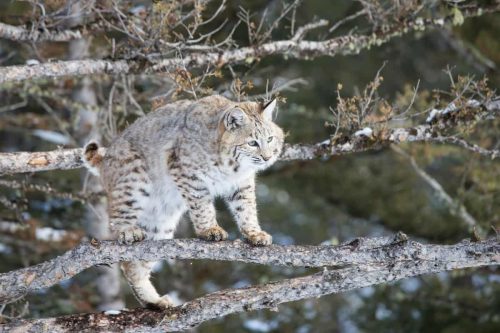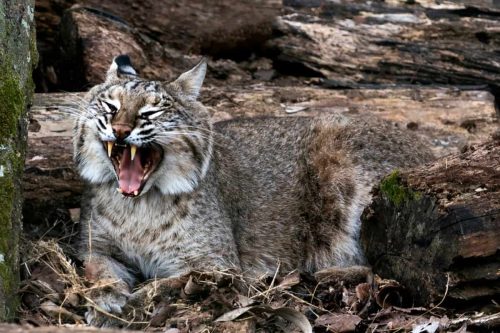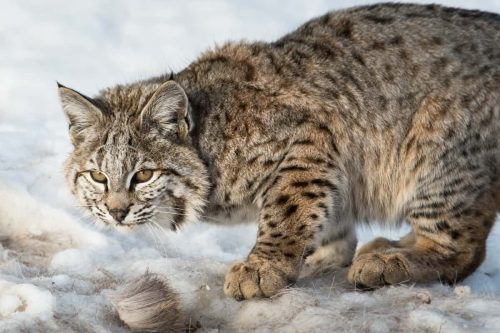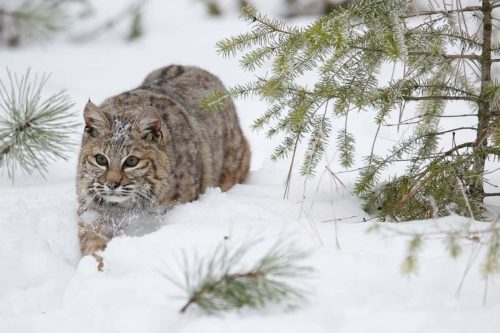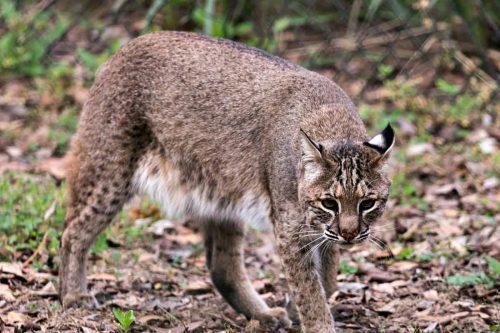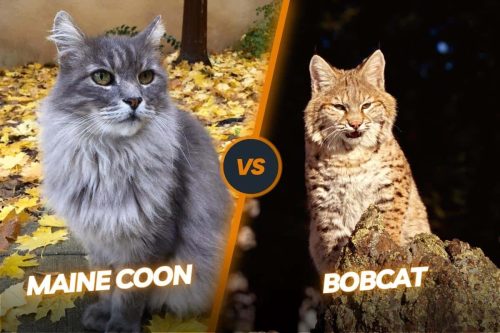Bobcat Mating Season: When & How Do Bobcats Mate?
Bobcats are very shy, solitary, and reclusive by nature. It is very rare to see these cats in the wilderness. Bobcat mating season is the only time when bobcats move a lot both within and outside their territory in search of the most suitable mating partner. Generally, it is a very specific time of the year when mating happens between male and female bobcats. Mating could also happen more than one time but most of the time breeding happens only once a year.
At the time of birth, bobcats can deliver a maximum of 6 kittens at a time. Bobcat kittens are completely dependent on their mother in the first year of their life. In the bobcat mating season, bobcats emit very weird sounds same like women screaming and moaning in extreme pain. The mating calls are very unsettling echoes that you can hear in the forest. In this article, we are going to explain in detail the bobcat mating season.
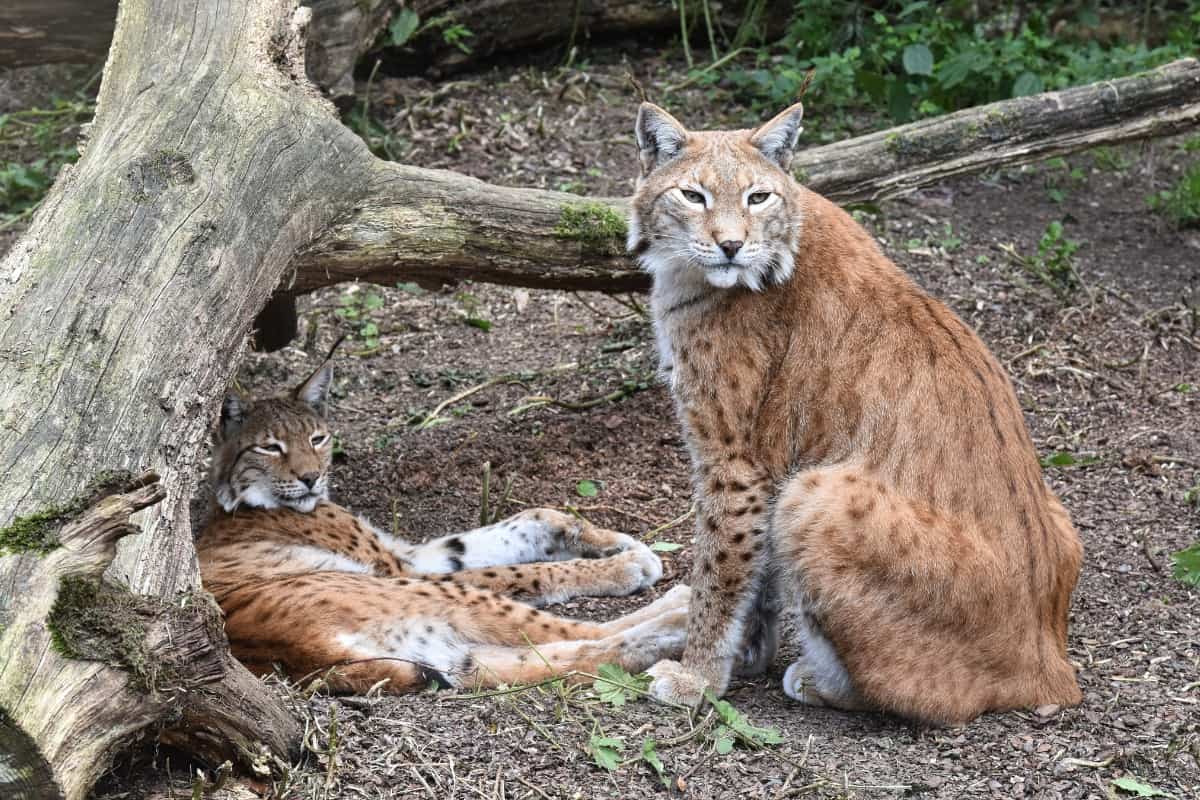
Contents
Bobcat mating season
Generally, bobcat mating season starts in December and ends in May. It also depends upon the location and climate of a particular region. Female bobcats are polyestrous by nature and experience more than one estrous cycle in the mating season. In the mating process, male bobcats are called toms while female bobcats are called queens. Male bobcats are always ready for mating while female bobcats only like to do mating during their estrus cycle.
After mating with one queen, Tom looks for another female bobcat for mating purposes. Tom usually travels a lot as compared to female bobcats. During very long-distance traveling, tom mate with a lot of queens and are also more likely killed by trappers or hunters. That’s why the population of female bobcats has outnumbered the male bobcats in terms of population size.
How do bobcats attract their mating partners?

Bobcats are polygynous wild cats and like to intermingle with as many mates as possible. Male bobcats always like to establish their home where they know there are more chances of finding female bobcats in their home territory. Male bobcats also like to overlap their territory with female bobcats for mating purposes. Sometimes male bobcats also deploy their smelling, hearing, and sighting senses in finding female bobcats.
Tom can analyze from the smell of urine or fecal matter whether the queen is available here or not. Female bobcats also release some special scents which could be a good sign for male bobcats. When male cats approach females, first of all, they rub their counterparts to know about their consent. Sometimes male bobcats accept their mating invitation and sometimes reject it. Female bobcats emit some special sounds if these cats are ready to mate.
Mating sounds of bobcat
During bobcat mating season, it makes some special sounds that indicate that the mating has been started or is going to happen. The most common sounds during these days are meows, hisses, growls, and screams. Male bobcats make louder sounds for the sake of attracting female bobcats towards them. Female cats also make mating some mating sounds but not as loud as those made by the male.
The sounds started occurring from the start of mating season and continuously happen until the mating season ends. If we hear these sounds in the wilderness then we must come to know that the bobcat mating season is going on and bobcats are usually the loudest in their sounds during this season.
Mating strategy of bobcats
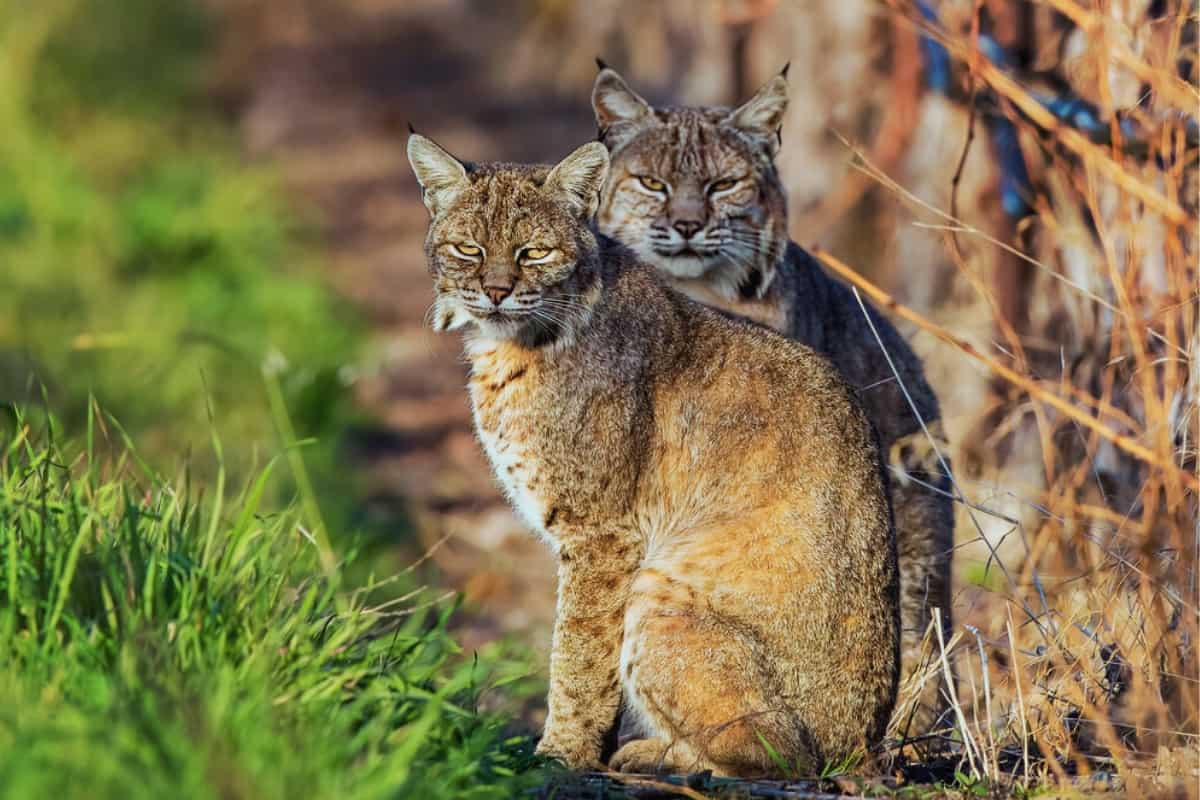
There are certain conditions and strategies which need to be fulfilled for practicing mating properly. First of all, a male bobcat must be 1.5 to 2 years old as this is the most conducive adult age of a male bobcat while a female bobcat can start breeding as soon as it becomes 1 year old. Bobcats are also polygynous by nature and one male has to mate with many female bobcats for maximum reproduction.
Being spontaneous Ovulators, the ovulation process of female bobcats also depends upon many environmental factors like sunlight other than just mating phenomenon. It is not like other house cats who have induced ovulation phenomenon. The estrous cycle of the bobcats works in a very good manner in the months of February and March which are also considered good months for mating purposes.
Mating behavior of bobcats
Bobcats exhibit very strange and weird behavior during mating season. They travel a lot in search of the perfect mating partner. Female bobcats also leave some special signs in the form of urine scent for attracting male bobcats. Male bobcats trace their female partner with the help of these signs. Some special vocalization is also done in the form of screeching, yowling, and growling for attracting each other.
At the peak mating season, fighting between male bobcats also occasionally happens. They act very ferociously and loudly these days. When an encounter happens between male and female bobcats, it is either warmly welcomed or aggressively fought off by each other. Female bobcats usually circle around male bobcats or arch their back if she is ready to intermingle. Gradually, they play with each other and throw at each other for the final mating process.
On average, the mating happens for five minutes only but they could repeat the mating process again and again at least 16 times a day. After the completion of mating with one female bobcat, male bobcat travel in search of another female partner as they don’t participate in the raising or protection of their young kits. It is only the responsibility of female bobcats to take care of their kits.
Reproduction
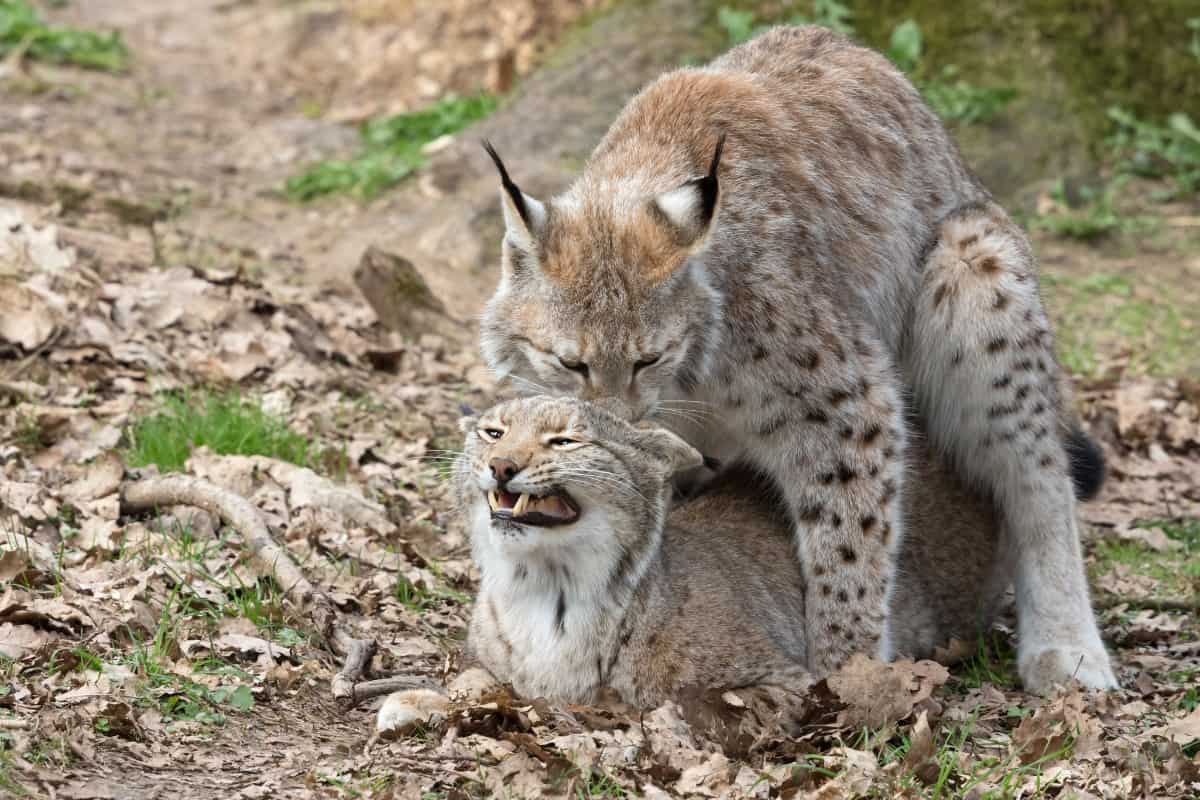
After becoming pregnant, female bobcats look for some safe place for safely spending their pregnancy days. For this purpose, they prefer to choose places like caves, rocks, logs, hollow trees, and some safe dens on Earth. Male bobcats might accidentally visit their partner but not take any part in reproduction. Female bobcats give birth after 60 to 70 days of gestation period. It usually happens in the month of March or May.
After giving birth, female bobcats raise their children for at least 9 to 12 months until they are good enough that they can take good care of them. After this time, female cats also have to prepare themselves for another mating season. Female bobcats might raise and take care of at least 1 to 3 litters per year. This is the most typical mating schedule which bobcats usually follow throughout their life cycle.
How do bobcats raise their young?
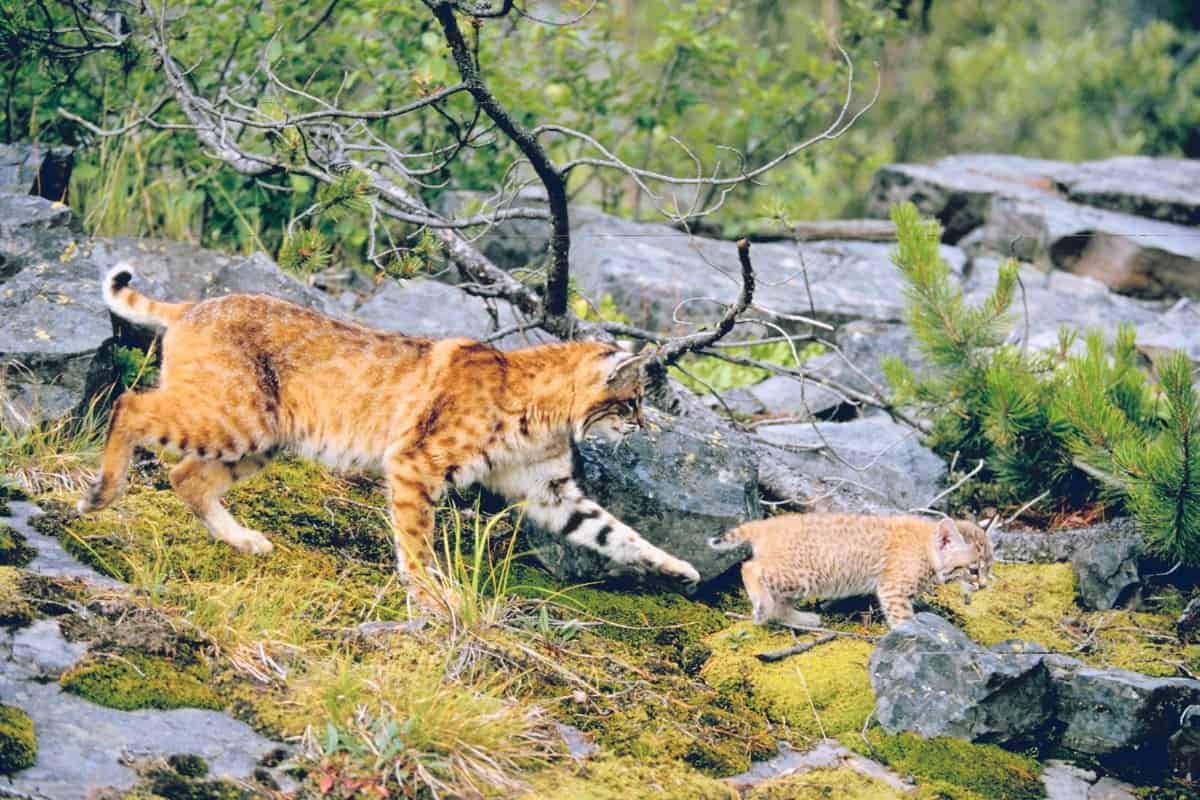
On average, bobcats can give birth to at least 2-3 litters. It could also increase to a maximum of 6 litters at a time. Newborn babies are usually 8 inches long and weigh around 8 to 12 ounces. You will find their eyes completely closed and they open their eyes after almost 8 to 10 days. Initially, they rely on just mother milk and gradually move from mother milk to silver meat. They start crawling when they become at least 5 weeks old.
They are completely weaned and are able to come out of their den when they become 2 months old. At this age, female bobcats start the training of their kits. They learn hunting and self-protection skills from their mother at this age. They become fully independent when they become at least 1 year old. At this age, they leave their mother and rely on their own natural instincts.
Why are bobcats solitary by nature?
Bobcats are highly territorial by nature and they don’t like to engage and socialize with other animals. That’s why they also don’t overlap their territory with other wild animals. They only overlap their territory with their female counterparts for mating purposes. Male bobcats rarely overlap their territory with other male bobcats as this could increase the chances of their fighting.
They may not socialize but they like to spend their time in a lot of their dens by traveling in their local habitats. These dens could be in caves, ledges, logs, rocks, etc. Young bobcats also like to act independently at a very young age. It is also one of the reasons for their solitary and reclusive behavior. Overall, bobcats are also very stealthy hunters and usually remain undetected in stalking and pouncing their prey.
The mortality rate of juvenile bobcats
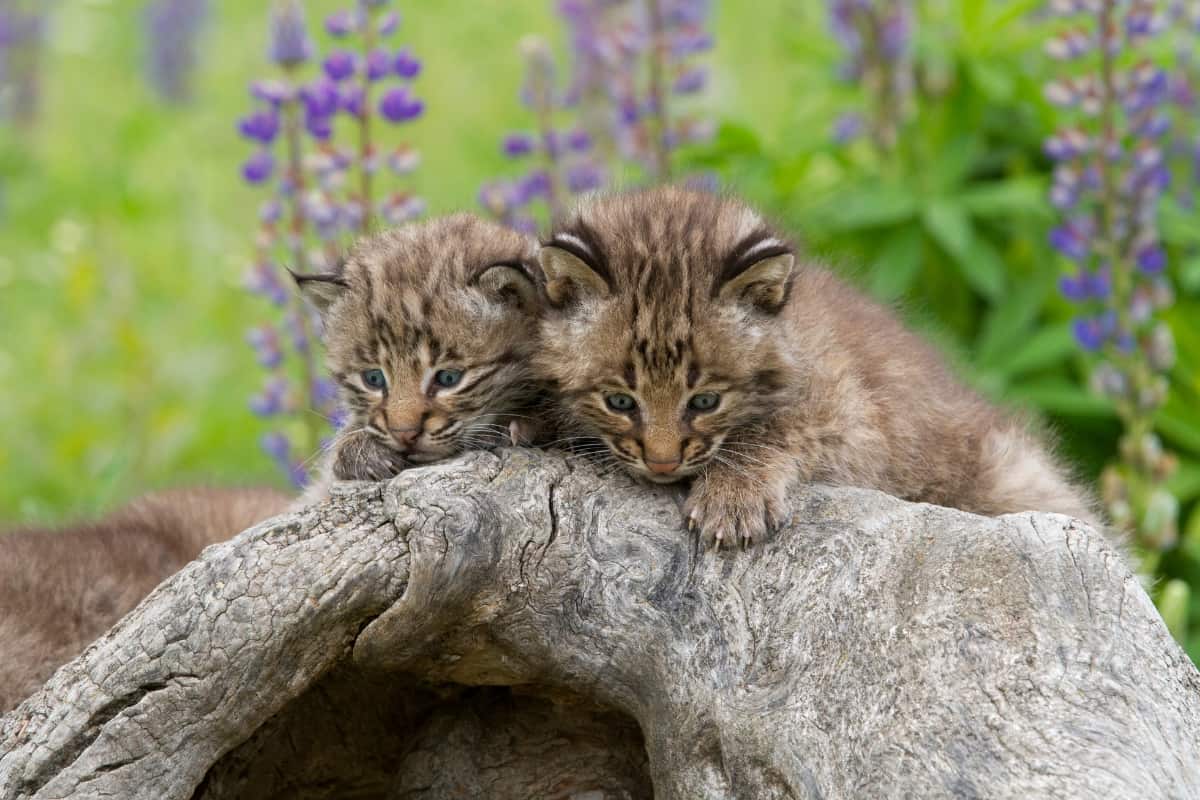
The first winter season could be extremely rough and harsh for young bobcats. If the winter is severe and the population of rabbits is also low in their local habitat, then there are more chances of their killing at this early age. They are also not adept at hunting. That’s why most juvenile bobcats could not survive their first winter.
See our article How long do bobcats live?
Young bobcats are also more vulnerable to the attacks of deadly predators like coyotes, eagles, mountain lions, and fishers. These are the main factors that play the main role in the survival of the bobcats in long term. Overall, the mortality rate of the juvenile bobcat is quite high and only one in the third bobcats survives.
Frequently asked questions
Conclusion
Bobcat mating season is the time when both male and female bobcats mate with each other for the sake of reproduction. It usually happens in the winter months of December and January and give birth in the month of April or May. The mortality rate in the juvenile bobcat is quite high but still, there is a very stable population of bobcats available throughout the North American continent. By going through this article, you can easily understand the complexities of the bobcat mating season.

Izzy is an experienced ranch worker who has a passion for exploring nature and getting up close to wildlife. With her connections to various animal organizations, Izzy is well-versed in animal care and rehabilitation.

